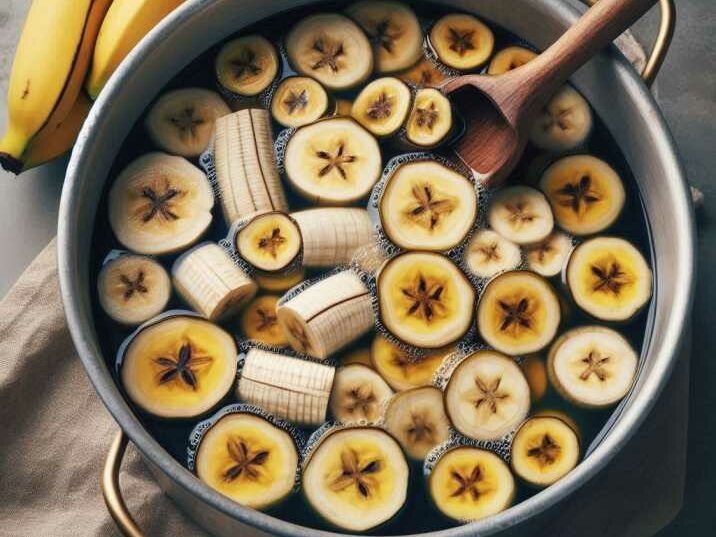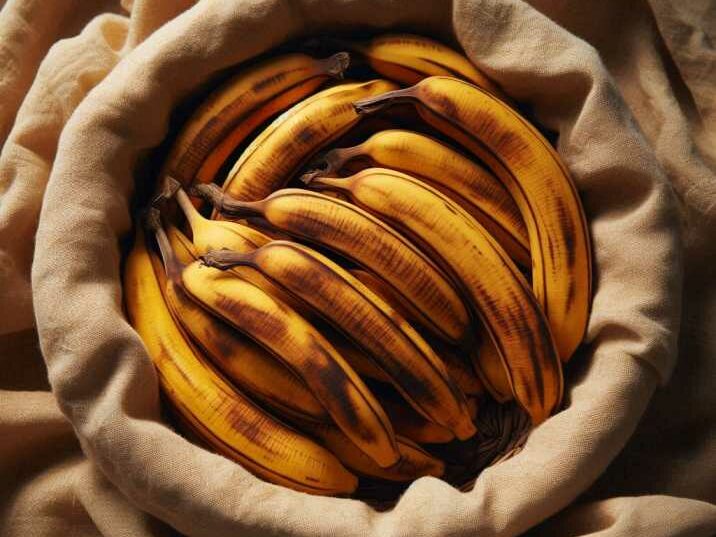Introduction
Table of Contents
Have you ever wondered if something as common as a Cavendish banana could have an unusual use like becoming a natural dye? While most people enjoy bananas as a tasty snack or a smoothie ingredient, bananas might surprise you with their potential to color fabric, paper, and even food. This article will explore how these popular fruits can be used as a natural dye, offering an eco-friendly alternative to synthetic colors. By the end, you’ll know all about the process of using bananas for dyeing, its benefits, and how you can try it yourself at home.

What Are Cavendish Bananas?
Cavendish bananas are the most popular type of bananas found in grocery stores. They are the ones we usually eat in our cereal or smoothies. But what makes them special is their potential to be more than just food. Let’s learn a bit more about these bananas:
- Appearance: They are long and curved with a bright yellow peel when ripe.
- Taste: They have a sweet and creamy flavor.
- Nutritional Value: Rich in potassium, vitamin C, and dietary fiber.
- Availability: Widely available throughout the year.
Why Consider Natural Dyes?
Natural dyes are colors made from plants, fruits, and other natural materials. Here’s why they are a good choice:
- Eco-friendly: Unlike synthetic dyes, natural dyes do not pollute the environment.
- Safe: They are non-toxic and safe for people with sensitive skin.
- Sustainable: Using natural resources for dyes supports sustainable practices.
- Unique Colors: They often produce unique shades that are hard to replicate with synthetic dyes.
The Science Behind Banana Dye
Bananas contain compounds that can be extracted and used as dye. Here’s how it works:
- Anthocyanins are pigments found in plants that can produce colours ranging from red to blue, depending on the pH level.
- Tannins: These help bind the dye to the fabric, making the color last longer.
- Starch: Provides consistency to the dye, helping it adhere to surfaces better.
How to Make Banana Dye
Making banana dye at home is easy and fun! Follow these simple steps to create your own natural dye:
What You Need:
- 3-4 ripe Cavendish bananas (use the peels)
- Water
- A large pot
- A strainer
- White vinegar or salt (to fix the dye)
- Fabric or material to dye
Steps:
- Prepare the Peels: Peel the bananas and cut the peels into small pieces.
- Boil the Peels: Place the peel pieces in a pot and cover them with water. Boil for about 30-45 minutes.
- Strain the Dye: After boiling, strain the liquid to remove the peels, leaving behind the dye.
- Fix the Dye: Add a tablespoon of vinegar or salt to the dye to help set the color.
- Dye the Material: Soak the fabric or material you want to dye in the banana dye for at least an hour. For deeper color, let it soak overnight.
- Rinse and Dry: Rinse the dyed material in cold water and let it dry in the shade.
Benefits of Using Cavendish Banana Dye
Using Cavendish banana dye offers several benefits:
- Eco-Friendly Option: Reduces reliance on chemical dyes and their environmental impact.
- Cost-Effective: Uses easily available banana peels, reducing waste and cost.
- Safe for All Ages: Perfect for projects with kids, as it’s non-toxic and safe.
- Cultural and Artistic Expression: Offers unique colors for crafts and artistic projects.
Applications of Banana Dye
Banana dye can be used in various ways. Here are some creative applications:
1. Fabric Dyeing
Use banana dye to color cotton, linen, or wool fabrics. It’s great for making eco-friendly clothing and accessories.

2. Paper Dyeing
Create unique colored papers for scrapbooking or crafts by soaking paper in banana dye.
3. Food Coloring
Although less common, banana dye can be used to color foods. Ensure the dye is safe and edible before using it in recipes.
4. Art Projects
Artists can experiment with banana dye to create natural paints and explore new color palettes.
Challenges and Considerations
While using banana dye is exciting, there are some challenges and things to keep in mind:
- Color Fastness: Natural dyes may fade faster than synthetic dyes, so items may need redyeing.
- Limited Color Range: Banana dye typically produces shades of yellow and brown, so it might not be suitable for all projects.
- Preparation Time: Making banana dye can be time-consuming, requiring preparation and patience.
Comparison Table: Banana Dye vs. Synthetic Dye
Here’s a comparison between banana dye and synthetic dye:
| Feature | Banana Dye | Synthetic Dye |
|---|---|---|
| Source | Natural (banana peels) | Chemical compounds |
| Environmental Impact | Eco-friendly | Polluting |
| Safety | Non-toxic and safe | Can be harmful |
| Cost | Low cost (uses waste materials) | Can be expensive |
| Color Variety | Limited to natural shades | Wide range of colors |
| Durability | May fade faster | Longer-lasting |
| Creativity | Offers unique and earthy tones | Consistent and vibrant colors |
Conclusion
Cavendish bananas are not just for eating—they can also be transformed into a natural dye. By using banana peels, you can create beautiful colors for fabric, paper, and more. While the color range may be limited, the environmental and health benefits make banana dye an exciting option to explore. Whether for art projects, crafts, or eco-friendly fashion, banana dye offers a creative and sustainable way to add color to your world. So next time you enjoy a banana, consider saving the peels and trying out your own dye-making adventure!
FAQs
1. Can Cavendish banana dye be used on all fabrics?
Not all fabrics take natural dyes equally well. Cotton, linen, and wool work best with banana dye.
2. How long does the banana dye color last?
The color may fade over time, especially with washing and sun exposure. It may require redyeing for vibrant color.
3. Is banana dye safe for skin contact?
Yes, banana dye is safe for skin contact as it is made from natural, non-toxic ingredients.
4. Can I use banana dye for food coloring?
Yes, but ensure that all ingredients used are food-safe, as some additives might not be edible.
5. How can I make the color more intense?
Soaking the material longer and using a fixative like vinegar or salt can help intensify the color.
